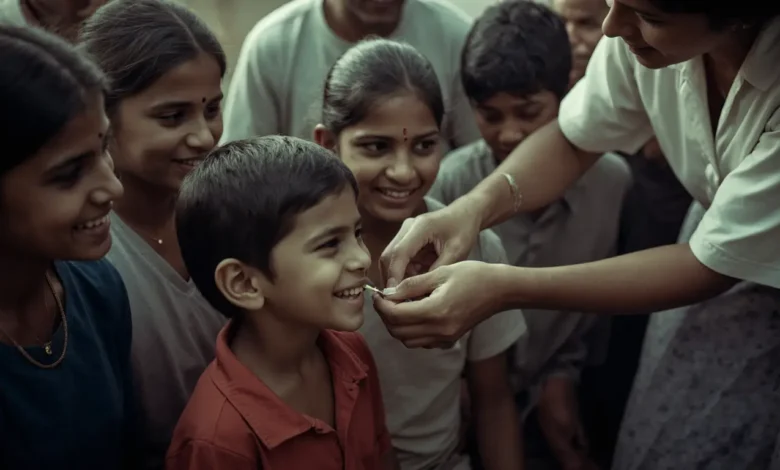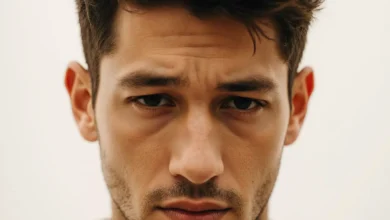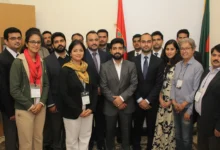Polio Drops 2025: India’s Renewed Mission to End Polio Once and for All

Polio Drops 2025 campaign is reigniting India’s public health momentum, marking a crucial phase in the country’s ongoing fight to remain polio-free. Despite being declared polio-free in 2014, India continues to implement large-scale immunization drives in 2025 to prevent any resurgence of the virus, ensuring the protection of over 170 million children nationwide.
table of contents
Polio Drops 2025: India’s Shield Against the Return of Polio
The Polio Drops 2025 campaign launched this year under the Universal Immunization Programme (UIP) has gained significant traction across states like Uttar Pradesh, Bihar, and Maharashtra — regions historically vulnerable to viral transmission. The campaign’s focus is twofold: strengthening surveillance systems and ensuring 100% oral polio vaccine (OPV) coverage among children under five.
Union Health Minister Mansukh Mandaviya emphasized that “India’s fight against polio is not over; it’s evolving.” The new 2025 drive integrates digital tracking, AI-powered health monitoring, and community-led awareness programs to reach even the remotest rural populations.
Mr. Olympia 2025 Winners Redefine the Future of Bodybuilding in Las Vegas
The New Tech Edge in 2025 Immunization
What sets Polio Drops 2025 in India apart is its fusion of technology and healthcare. The Ministry of Health has partnered with several AI startups to track vaccination progress in real time. Health workers now use mobile-based geo-tagging systems to identify unvaccinated zones, while AI prediction models help forecast possible virus re-entry risks from global regions where polio remains active, like Afghanistan and Pakistan.
Moreover, a special focus is placed on migrant populations and urban slums, where immunization gaps often occur. In cities like Delhi and Mumbai, drones are even being used experimentally to deliver vaccine supplies to hard-to-reach health centers.
Community Trust and the Power of Awareness
Beyond technology, trust-building remains the cornerstone of India’s polio strategy. Many regions in India still face vaccine hesitancy due to misinformation or religious misconceptions. To counter this, health authorities in 2025 launched the campaign “Drops of Hope”, featuring local influencers, Bollywood stars, and cricket icons who advocate for vaccination in local dialects across digital media platforms.
Grassroots workers — known as ASHA workers — continue to play a heroic role. They go door-to-door, ensuring parents understand that two drops can save a lifetime. The 2025 initiative celebrates them as the “Real Warriors of Polio Eradication.”
India’s Role in Global Polio Eradication
India’s contribution to the Global Polio Eradication Initiative (GPEI) remains indispensable. In 2025, India has pledged to assist neighboring South Asian countries with vaccine production, cold-chain logistics, and epidemiological data-sharing. Hyderabad-based Bharat Biotech has expanded its OPV production capacity by 20%, strengthening regional vaccine security.
The World Health Organization (WHO) has praised India’s 2025 model as a “benchmark for proactive health governance.” With WHO-certified polio laboratories in Chennai and Mumbai, India serves as a regional surveillance hub for tracking poliovirus mutations globally.
The Emotional Core of the 2025 Campaign
While the campaign is data-driven, its heart lies in human stories. In villages of Bihar, mothers recall the fear of paralysis that once haunted every parent. Now, Polio Drops 2025 represents not just a medical effort but a national promise — that no Indian child will ever again suffer from a preventable disease.
Across India, the slogan “Do Boond Zindagi Ki” (Two Drops of Life) echoes once again — symbolizing hope, resilience, and the power of collective action.
Challenges Ahead
Despite the progress, India faces logistical challenges: ensuring vaccine cold-chain stability in rural areas, combating social media misinformation, and preventing fatigue among healthcare workers. However, experts argue that 2025’s integrated approach — combining science, communication, and empathy — gives India a sustainable edge against potential outbreaks.
Conclusion
Polio Drops 2025 is more than a health campaign — it’s a reaffirmation of India’s leadership in global public health. As India continues to innovate in vaccine technology and community engagement, its success stands as a reminder to the world: vigilance is the price of freedom — and in India, those two drops still matter more than ever.
FAQ
1. Why is India still conducting Polio Drops campaigns after being declared polio-free?
Because the risk of poliovirus importation from other countries remains, continued vaccination ensures immunity and surveillance readiness.
2. What’s new in the 2025 Polio Drops campaign?
The 2025 campaign uses AI tracking, drones for delivery, and digital immunization records for improved efficiency and transparency.
3. Which age group is targeted in Polio Drops 2025?
Children under five years of age are the primary focus, with special outreach in high-risk zones.
4. Who funds India’s Polio Drops campaign?
The program is supported by the Indian government with partnerships from WHO, UNICEF, and the Bill & Melinda Gates Foundation.
Discover more from Feenanoor
Subscribe to get the latest posts sent to your email.









